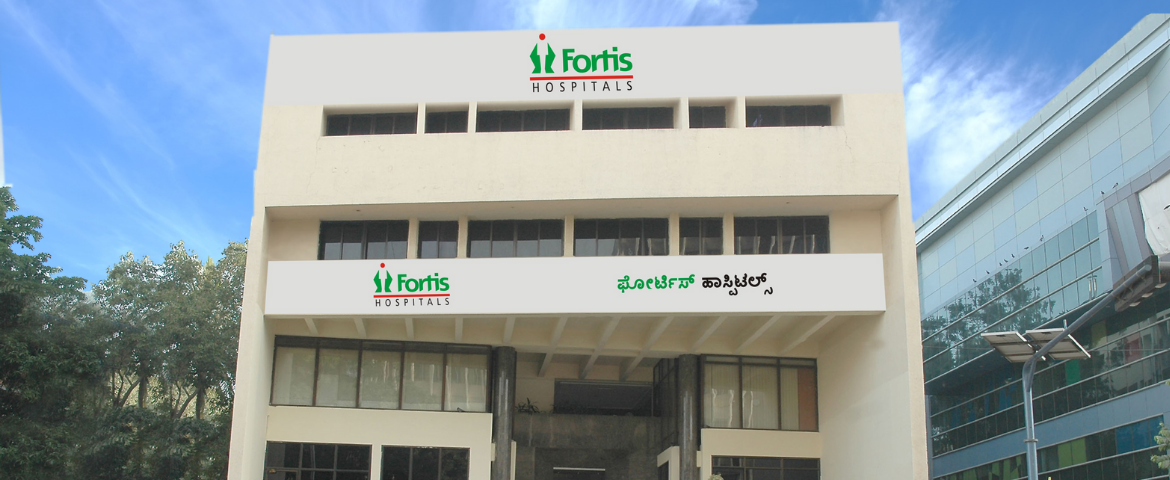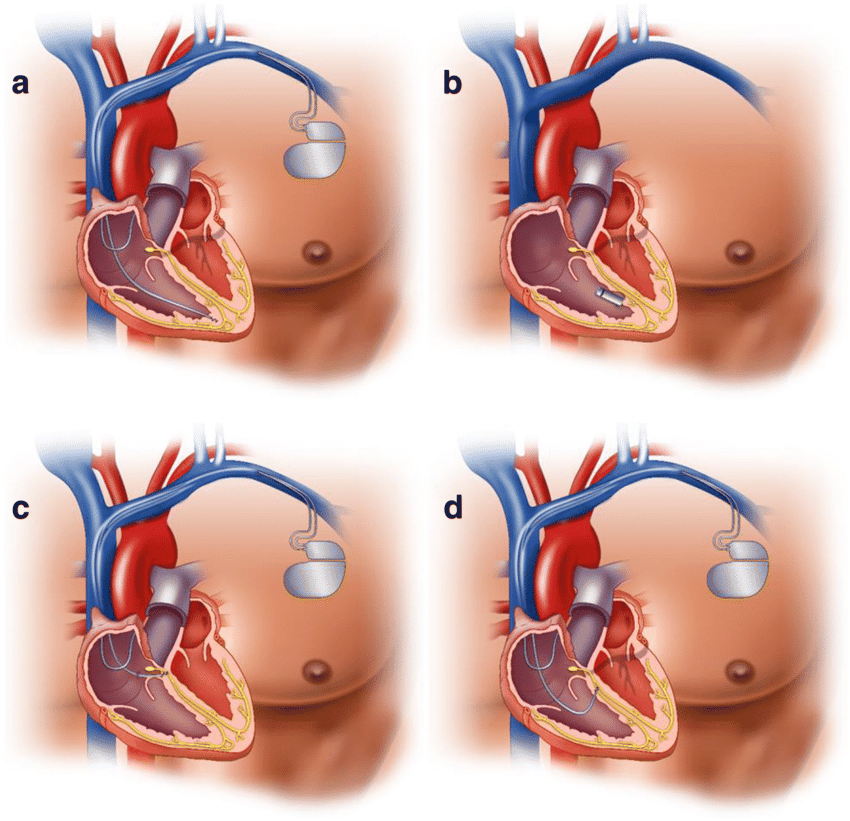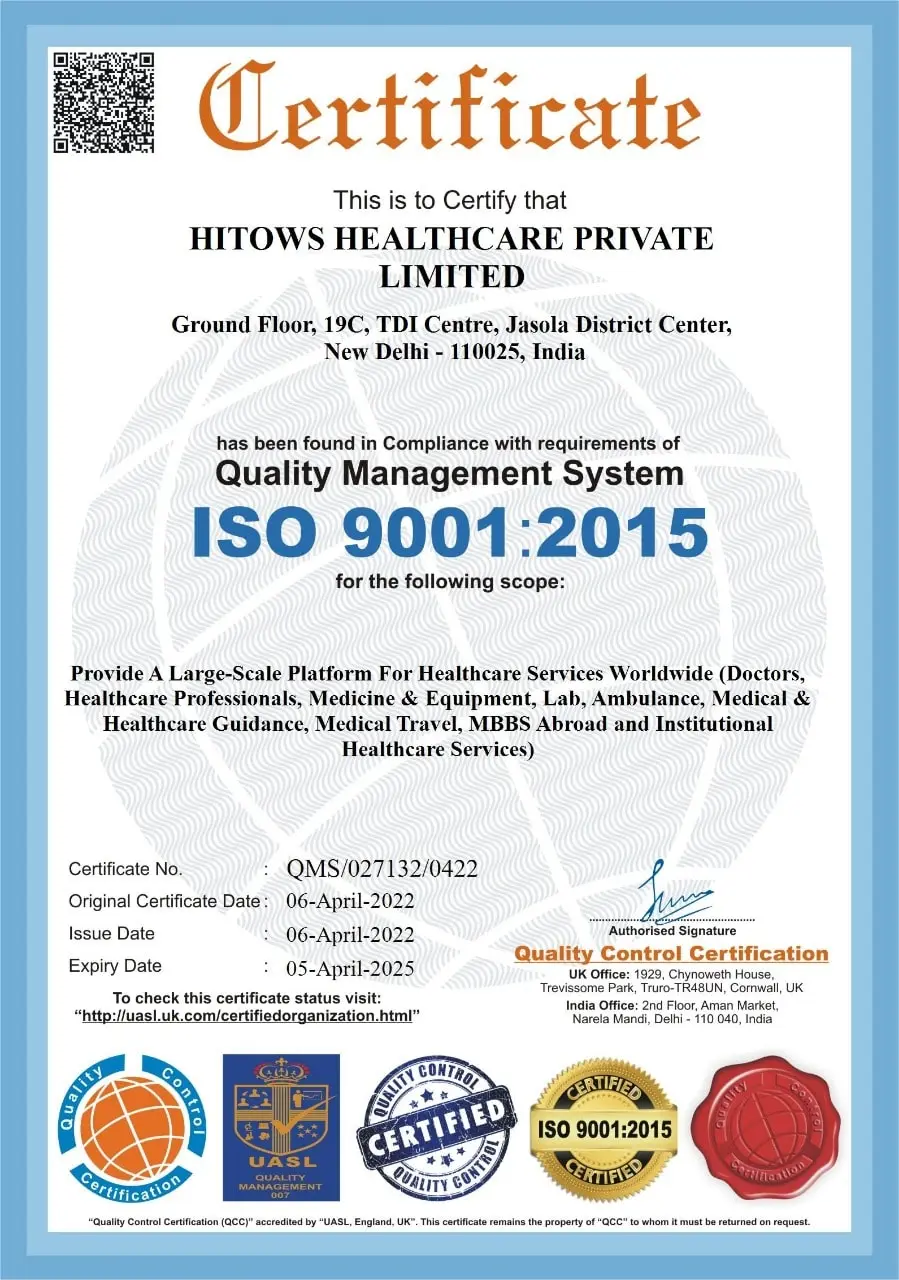Pacemaker Procedure Double Chamber cost in Canada
Pacemaker Procedure Double Chamber
This kind of pacemaker sends electrical impulses to your heart's right ventricle and right atrium, allowing you to control the timing of contractions in both chambers.
A pacemaker is a battery-operated device that gives electrical signals to your heart to help it beat at the right rate. The pacemaker is surgically implanted beneath your skin, beneath your collarbone, and one or more cables, or leads, link it to your heart. A dual chamber pacemaker contains one lead in the heart's upper chamber, or atrium, and another in the bottom chamber, or ventricle.
Bradycardia and atrial fibrillation linked with bradycardia are treated using dual chamber pacemakers. Bradycardia is characterised by a heart rate of 60 or fewer beats per minute.
Disease Overview:
Heart failure
When the heart muscle doesn't pump blood as well as it should, it causes heart failure, also known as congestive heart failure. When this happens, blood can back up in the lungs and fluid can build up, causing shortness of breath.
Certain cardiac disorders, such as restricted arteries in the heart (coronary artery disease) or high blood pressure, cause the heart to weaken or stiffen over time, making it unable to effectively fill and pump blood.
Signs and Symptoms:
Heart failure can be long-term (chronic) or develop quickly (acute).
The following are some of the indications and symptoms of heart failure:
- When you are active or lying down, you may have shortness of breath.
- Weakness and exhaustion
- Legs, ankles, and feet are swollen.
- Heartbeats that are fast or irregular
- Exercise ability is hampered.
- Coughing or wheezing that is persistent, with white or pink blood-tinged mucous
- Swelling of the abdomen (abdomen)
- Fluid retention causes fast weight gain.
- Nausea and an inability to eat
- Concentration problems or a lack of attentiveness
- Chest pain if heart failure is triggered by a heart attack
Disease Causes:
Any of the illnesses listed below can harm or weaken your heart, resulting in heart failure. Some of these may be present even if you aren't aware of it:
Coronary artery disease: It is the most frequent type of heart disease and the leading cause of heart failure.The illness is caused by fatty deposits forming in the arteries, which decrease blood flow and can result in a heart attack.
High Blood Pressure: Your heart has to work harder than it should to pump blood throughout your body if your blood pressure is high. This increased exertion might cause your heart muscle to become too stiff or weak to effectively pump blood over time.
Faulty Heart Valves: The heart's valves keep blood flowing in the right direction. A weakened heart is caused by a damaged valve, which can be caused by a heart defect, coronary artery disease, or a heart infection.
Damage to the heart muscle: Heart muscle damage can have many causes, including certain diseases, infection, heavy alcohol use, and the toxic effect of drugs, such as cocaine or some drugs used for chemotherapy. Genetic factors also can play a role.
Myocarditis: virus such as the COVID-19 virus, is the most prevalent cause of myocarditis, which can result in left-sided heart failure.
Arrhythmias: Abnormal cardiac rhythms can cause your heart to beat excessively quickly, putting additional strain on it. Heart failure can also be caused by a sluggish heartbeat.
Diagnosis:
Your doctor will take a thorough medical history, assess your symptoms, and do a physical examination to diagnose heart failure. Your doctor will also look for heart failure risk factors such as high blood pressure, coronary artery disease, or diabetes.
Your doctor can listen to your lungs for symptoms of fluid accumulation (lung congestion) and your heart for murmurs (whooshing noises) that might indicate heart failure. Your veins in your neck may be examined, and fluid accumulation in your belly and legs may be checked.
Following the physical examination, your doctor may prescribe some of the following tests.
Blood test: Blood tests are used to screen for indicators of heart disease.
Echocardiogram: An echocardiography is a type of ultrasonography of the heart. Sound waves are employed to produce moving images of the heart. An echocardiography allows doctors to examine the aortic valve and aorta in greater detail. It can assist in determining the source of aortic valve disease as well as the severity of the condition.
Electrocardiogram (ECG or EKG): The electrical activity of the heart is recorded in this noninvasive examination.
Chest X-ray: It can provide information about the heart and lungs' health.
Cardiac MRI: It creates precise pictures of the heart using magnetic fields and radio waves.
Cardiac computerized tomography (CT) Scan: In this, Series of X-rays are used to obtain detailed pictures of the heart and heart valves. This imaging approach may be used by doctors to determine the size of the aorta and examine the aortic valve in greater detail.
Coronary Angiogram: This test involves inserting a thin, flexible tube (catheter) into a blood artery, commonly in the groyne, and guiding it to the heart arteries. A dye (contrast) is administered into the catheter to assist the doctor locate blockages by making the arteries appear more clearly on an X-ray
Myocardial biopsy: A doctor inserts a thin, flexible cable into a vein in the neck or groyne and takes extremely small sections of the heart muscle for inspection during this procedure. This test may be used to diagnose heart failure caused by certain types of heart muscle diseases..
Disease Treatment:
Heart failure is a chronic condition that requires ongoing care. Heart failure symptoms and indicators can improve with medication, and the heart can occasionally get stronger.
Doctors can occasionally address the underlying cause of heart failure. Heart failure can be reversed by mending a heart valve or managing a rapid heart beat, for example. However, for the majority of patients, heart failure therapy is a combination of the correct drugs and, in some cases, the use of devices that help the heart pulse and contract effectively.
Medication: Heart failure is generally treated with a mix of drugs. You could take one or more drugs, depending on your symptoms, such as: ACE inhibitors, receptor blockers, Beta blockers, Diuretics etc.
To cure the underlying condition that caused heart failure, surgery or other treatments to implant cardiac devices may be advised. The following surgeries or other treatments may be used to treat heart failure:
- Coronary bypass surgery
- Heart valve repair or replacement
- Implantable cardioverter-defibrillators (ICDs)
- Cardiac resynchronization therapy (CRT)
- Ventricular assist devices (VADs)
- Heart transplant
Country wise cost comparison for Pacemaker Procedure Double Chamber:
| Country | Cost |
|---|---|
| India | $8910 |
| Canada | $10098 |
Treatment and Cost
11
Total Days
In Country
- 3 Day in Hospital
- 2 No. Travelers
- 8 Days Outside Hospital
Treatment cost starts from
$0
Popular Hospital & Clinic
Featured Hospital
0 Hospitals
Related Packages
More Related Information
Some of the top rated doctors are:
- Italy
Some of the top rated hospitals are:
- India
- Fortis Memorial Research Institute
- BLK-Max Super Speciality Hospital
- Medanta-The Medicity, Gurgaon
- Indraprastha Apollo Hospitals, New Delhi
- Artemis Hospitals
- Manipal Hospitals
- Nanavati Max Super Speciality Hospital, Mumbai
- Kokilaben Dhirubhai Ambani Hospital, Mumbai
- KIMS Hospital Kondapur, Hyderabad
- MIOT International, Chennai
- MGM Healthcare, Chennai
- Italy




